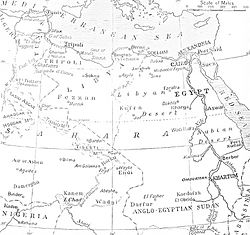| Western Frontier Force | |
|---|---|
 Western Desert of Egypt | |
| Active | 1915–1918 |
| Disbanded | 1918 |
| Country | British Empire |
| Branch | Army |
| Engagements | Affair of the Wadi Senab Affair of the Wadi Majid Affair of Halazin Action of Agagia Affairs in the Dakhla Oasis Operations at Girba and Siwa |
| Commanders | |
| Notable commanders | Major-General Sir Charles Dobell |
The Western Frontier Force was raised from British Empire troops during the Senussi campaign from November 1915 to February 1917, under the command of the Egyptian Expeditionary Force (EEF). Orders for the formation of the force were issued on 20 November 1915, under Major-General Alexander Wallace, C.B. The force concentrated at Mersa Matruh on the coast and began operations against the Senussi in late 1915.